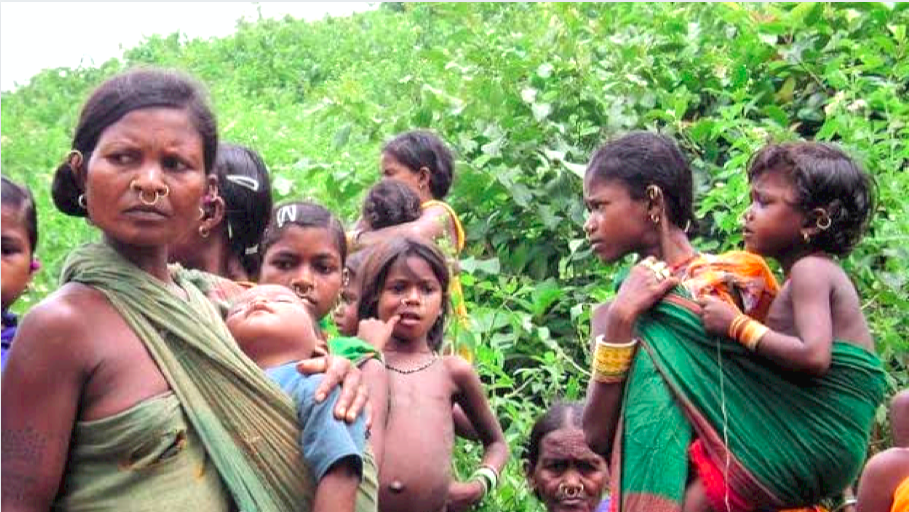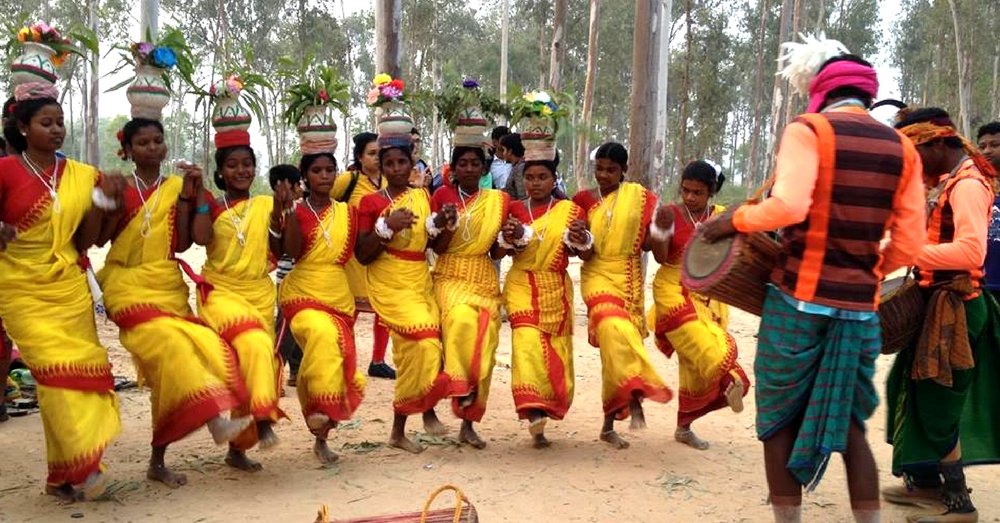Adivasis in India are being made to suffer a lot … and are being blamed for it too
Since time immemorial, tribals have resided in forests, thereby conserving it. But they are the ones who have been subjected to social exclusion and are also called ‘destroyers of the environment’

Indigenous people or the aboriginals, as the name suggests, are native inhabitants of the land. They are also called adivasis, vanvasis, etc. Since time immemorial, they have resided in forests, thereby conserving flora, fauna and the whole ecosystem in general. But, they are ones who have been subject to utmost injustice and social exclusion. It still continues, though not openly.
They have been deprived of almost everything, most, importantly, their forest rights. For example, the right to inhabit, right to collect, use forest produce, etc, and the right to life as enshrined under Article 21 of the constitution of India. This “hidden” deprivation not only snatched their basis of livelihood but also affected the ecosystem adversely. They are like a newborn baby thrown in front of a pack of wolves.
But what’s worse is that they are also tagged as ‘destroyers of the environment’. Some people, especially the government, are so naive that they have branded tribals as “destroyers” of their own home. But, are they really naive or do they have some ulterior motive?
After Independence, efforts have been made to ensure justice. It is because of these efforts that at least a very small (almost negligible) fraction of the ST community is now a part of mainstream society. But, the most important step came in 2006 when the Forest Rights Act was enacted. This Act appears green if its provisions are observed, but if we talk about its implementation, it is barren land. Before proceeding further, it is essential to know the rights recognised under the Act:
- Title right: The right to ownership to land farmed by tribals or forest dwellers subject to a maximum of four hectares. Ownership is only for land that is actually being cultivated by the family concerned and no new land will be granted.
- Use rights to minor forest produce (also including ownership), to grazing areas, to pastoralist routes, etc.
- Relief and development rights to rehabilitation in case of illegal eviction or forced displacement and to basic amenities, subject to restrictions for forest protection.
- Forest management rights, to protect and conserve forests and wildlife.
Now the important question is, who is eligible to claim rights under the Act? The Act:
- Provides for those primarily residing in forests or forest land and depending on forests and forest land for a livelihood.
- Further, the claimant must either be a member of the Scheduled Tribe community in that area or must have been residing in the forest for 75 years.

The Act provides an extensive procedure for deciding who gets the rights. But the problem starts here: how will the indigenous people prove it?
This is the loophole that has caused this complicated problem. A majority of the tribal communities don’t have any land record or any other evidence; most of them don’t even understand the mainstream language properly.
It is not a secret that the Ministry of Forest and Environment and the Ministry of Tribal Affairs have been at loggerheads lately. The former is claiming that the tribals are destructors of the environment, and the latter opposes that view. And, trust me, the Ministry of Forest and Environment has the most ironic instrumentality I have ever seen. Let us not even discuss the “namesake” ministry.
In the recent judgment of Wildlife First & Ors. V. Ministry of Forest and
Environment & Ors. 2019, the Supreme Court ordered state governments to evict over 10 lakh forest dwelling families whose claims have been rejected under the Forest Rights Act, 2006. The tribal communities are claiming that the claims rejected are faulty and improper.
The Supreme Court is expected to provide justice but this judgement shows a different picture. It seems everyone is trying to find more loopholes in the laws to exploit them. They are trying to find more and more issues for which the tribal communities can be blamed. So, they are tagging them as destroyers of the environment.
The United Nations Development Programme (UNDP) report, ‘The Forest Survey of India’, etc, clearly shows that where indigenous groups have control of the land, forest area and biodiversity flourishes. Are they (those claiming tribals destroy forests) trying to say that all these reports and surveys are false? The UNDP report also says that nearly 70 million indigenous women and men depend on forests for livelihood, and many more are farmers, hunter-gatherers or pastoralists. One should at least use their common sense and wonder why anyone would destroy their means of livelihood.
We shouldn’t forget that The Forest Rights Act is satisfactorily backed by the Constitution, and the important articles in this regard are Article 14: Right to Equality; Article 15(4): Special provisions for the advancement of other backward classes (it includes the ST community); Article 19(5): While the rights of free movement and residence throughout the territory of India and of acquisition and disposition of property are guaranteed to every citizen, special restrictions may be imposed by the state for the protection of the interests of any Scheduled Tribe, and Article 21: Right to Life.
Hence, their rights are guarded well within the Constitution theoretically, but, in reality, this is not the case.
In the case of Olga Tellis V. Bombay Municipal Corporation, 1985, the Supreme Court held that the Right to Life as guaranteed by Article 21 of the Constitution also includes Right to Livelihood. Isn’t the current scenario a violation of Article 21 because the indigenous people are being deprived of their right to livelihood unreasonably and unjustly?
I may even believe that these reports are false, but can emotions be fabricated? Nature holds immense significance in tribal culture; we can see a lot of examples of it being revered and it being referred to in song and dance. There exists a beautiful symbiotic relationship between the tribals and the environment and we all know well that there’s no “I” in a symbiotic relationship.

In the case of Maneka Gandhi V. Union of India, the apex court beautifully explained this aspect of Article 21 – that the Right to Life doesn’t mean mere animalistic existence but includes within its ambit the right to live with human dignity. This was affirmed by a number of cases like the Francis Coralie Mullin case and the Bandhua Mukti Morcha case. But, with regard to tribals, can you say that they are living a life with dignity? Definitely not.
The most important fundamental right seems blatantly violated in their case and no one is doing anything. If tribals are “destroying”the environment, then are people trying to say that big mining projects taken over by corporations are healing the environment? Hasdeo Arand (where a fake Gram Sabha was organised to get the permission), and the Aarey forest cases are still fresh in everyone’s mind.
Forget even about tribal communities for a second, think about yourselves (since everyone is selfish here). You are depriving yourself of the right to a clean and healthy environment. It has been affirmed by cases like the MC Mehta judgments, Rural Litigation and Entitlement Kendra V. State of UP, and the Indian Council for Enviro-Legal Action V. Union of India, etc. that the Right to Life as enshrined under Article 21 also takes within its sweep the right to a healthy environment.
Think about it. Everything and everyone is connected, whatever happens to one will affect the other. My dad once told me that tribal communities use forests for their need not for greed. And, need can never destroy anything, but greed does. Since we all know who is greedy, it is suffice to say that people are digging their own grave.
Pragya Uike is a writer and poet pursuing a law degree from Hidayatullah National Law University (HNLU), Raipur. She belongs to the Gond tribe. She loves to write about social issues pertaining to tribals, marginalised people and gender equality.
(Views are personal)
The article has been sourced from Youth Ki Awaaz-Adivasi Lives Matter with permission from Adivasi Lives Matter. You can read the original article here

